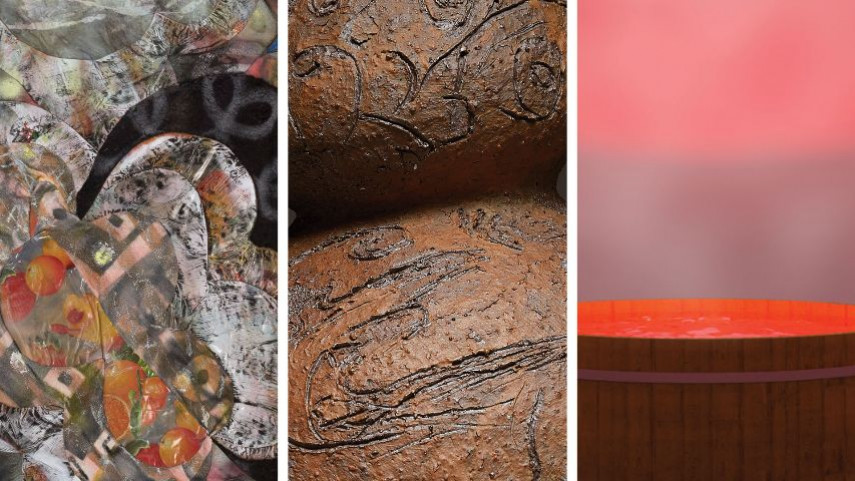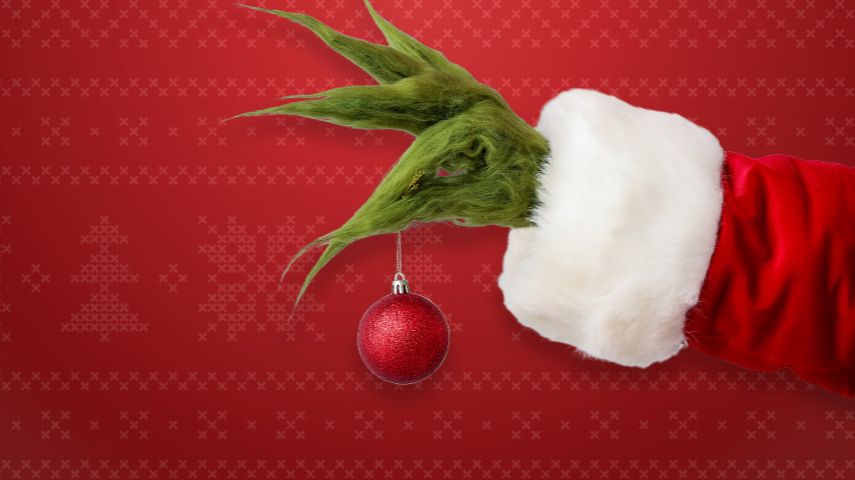15 April 2021
Bedrock: Emerita Baik, Maia McDonald, and Nââwié Tutugoro
Bedrock features work by Emerita Baik, Maia McDonald, and Nââwié Tutugoro, is curated by Abby Cunnane, and marks the beginning of her programme at TPR.

Exhibition dates
- Preview: Wednesday 14 April, 5:30pm
- Exhibition talk with Emerita Baik, Maia McDonald, and Nââwié Tutugoro: Wednesday 14 April, 4:30pm
Maia McDonald
Maia McDonald’s Hāpai is a group of three large uku (clay) works, fired in her studio in Ngāmotu New Plymouth. Hāpai means to ‘take up, to shoulder’. It can also mean ‘to begin’ in the sense of a waiata or karakia, ‘to set off’, or ‘to rise’ like the sun (Te Aka Māori Dictionary). Holding the transformative possibility of each of these verbs, the work itself has also moved through states of change: from earth and water, through fire, to ceramic. McDonald acknowledges this transition in terms of tapu and noa, and through tikanga responsive to the shift of states fundamental in ceramic practice. Maia Robin McDonald (Ngaati Mutunga, Urenui Marae; Te Ati Awa, Parihaka) works primarily with uku (clay).
Emerita Baik
Emerita Baik’s I love more than two loves (2020) is a series of quilts made in response to the experience of living ‘between’ languages (specifically, Korean and English), cultures, and her mother's experiences since moving to Aotearoa from Korea. She writes, “My work is pushed through creating new narratives for migrant bodies”, both known individuals and wider audiences. Hung in the gallery, the quilts are both hefty—these forms may be rocks with molten centres, or rain-laden storm clouds animated by static electricity—and malleable, something you might fall into to be held, like falling onto a bed. Emerita Baik makes ‘sculptural paintings’, working across media.
Nââwié Tutugoro
Nââwié Tutugoro’s installation, And a blue vocoder, and everything is blue for them (2021), centres around a hot pool image, which bubbles, steams, glows. Originally shown online as part of May Fair Art Fair, the hot pool form is reconfigured here in relation to The Physics Room space and the artist’s research around migratory movements: departures, returns, navigating urban and institutional spaces as an indigenous woman. A number of bindles (cloth bundles of belongings attached to the end of a stick) occupy the gallery, alongside materials collected by the artist in her daily commutes. There is a strong sense that these objects will not be here forever, that they mark the space perhaps as remnants on a tideline would: with precision, and temporarily, before returning to the sea. Nââwié Tutugoro works mainly in sculptural installation.
Images
Left: Emerita Baik, I love more than two loves (detail), 2020.
Middle: Maia McDonald, Try though I may fail (surface detail), 2020. Photo: Mark Hamilton. Courtesy of Laree Payne Gallery.
Right: Nââwié Tutugoro, And a blue vocoder, and everything is blue for them (detail of animation by Edward Smith), 2021.
Exhibition dates
- Preview: Wednesday 14 April, 5:30pm
- Exhibition talk with Emerita Baik, Maia McDonald, and Nââwié Tutugoro: Wednesday 14 April, 4:30pm
Maia McDonald
Maia McDonald’s Hāpai is a group of three large uku (clay) works, fired in her studio in Ngāmotu New Plymouth. Hāpai means to ‘take up, to shoulder’. It can also mean ‘to begin’ in the sense of a waiata or karakia, ‘to set off’, or ‘to rise’ like the sun (Te Aka Māori Dictionary). Holding the transformative possibility of each of these verbs, the work itself has also moved through states of change: from earth and water, through fire, to ceramic. McDonald acknowledges this transition in terms of tapu and noa, and through tikanga responsive to the shift of states fundamental in ceramic practice. Maia Robin McDonald (Ngaati Mutunga, Urenui Marae; Te Ati Awa, Parihaka) works primarily with uku (clay).
Emerita Baik
Emerita Baik’s I love more than two loves (2020) is a series of quilts made in response to the experience of living ‘between’ languages (specifically, Korean and English), cultures, and her mother's experiences since moving to Aotearoa from Korea. She writes, “My work is pushed through creating new narratives for migrant bodies”, both known individuals and wider audiences. Hung in the gallery, the quilts are both hefty—these forms may be rocks with molten centres, or rain-laden storm clouds animated by static electricity—and malleable, something you might fall into to be held, like falling onto a bed. Emerita Baik makes ‘sculptural paintings’, working across media.
Nââwié Tutugoro
Nââwié Tutugoro’s installation, And a blue vocoder, and everything is blue for them (2021), centres around a hot pool image, which bubbles, steams, glows. Originally shown online as part of May Fair Art Fair, the hot pool form is reconfigured here in relation to The Physics Room space and the artist’s research around migratory movements: departures, returns, navigating urban and institutional spaces as an indigenous woman. A number of bindles (cloth bundles of belongings attached to the end of a stick) occupy the gallery, alongside materials collected by the artist in her daily commutes. There is a strong sense that these objects will not be here forever, that they mark the space perhaps as remnants on a tideline would: with precision, and temporarily, before returning to the sea. Nââwié Tutugoro works mainly in sculptural installation.
Images
Left: Emerita Baik, I love more than two loves (detail), 2020.
Middle: Maia McDonald, Try though I may fail (surface detail), 2020. Photo: Mark Hamilton. Courtesy of Laree Payne Gallery.
Right: Nââwié Tutugoro, And a blue vocoder, and everything is blue for them (detail of animation by Edward Smith), 2021.
Location
The Physics Room Contemporary Art Space, 301 Montreal Street, Christchurch Central
The Physics Room Contemporary Art Space, 301 Montreal Street, Christchurch Central
Event contact
Michelle Wang
021 0284 0184
michelle@physicsroom.org.nz
www.physicsroom.org.nz/exhibitions/bedrock
www.facebook.com/ThePhysicsRoom
twitter.com/physicsroom
www.instagram.com/physicsroom/





